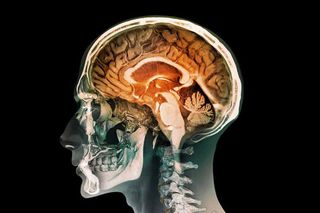
Why Sexual Abuse Survivors Often Have Distorted or Delayed Memories
To prevent people from reliving traumatic experiences, the brain processes and stores such memories differently.

But it happened years ago, why not report it then?
Why come out now, after decades?
How do you not remember exactly what happened during the incident?
Such grumbles can be found regularly on social media, news debates, public discussions, and press conferences, especially with the rise and spread of the #MeToo movement. The idea behind these grumbles is to question the reliability of a survivor’s account of sexual abuse or harassment, by fixating on the stretch of time between the incident’s occurrence and its disclosure, in an attempt to discredit them and invalidate their experience. This logic used by #MeToo defiers is two-pronged and gravely erroneous: First, if someone has experienced abuse some time ago, why wouldn’t they report it when it occurred; why wait until years later? Second, can anyone’s memory of something that happened in the distant past be relied upon?
As puzzling as these objections can sound, they can be coherently answered by science. Brain studies and psychology, together, trace these so-called delays to a complicated relationship between trauma and memory. The brain stores traumatic memories, such as those of abuse and harassment, differently than it does other memories, restricting their easy recollection out of self-preservation. Yet, with time, these ‘hidden’ memories find complex ways to come out.
*
The discourse around the role of memory in recounting trauma reached its peak on September 27 last year, with the strenuous testimony of Christine Blasey Ford, PhD, about the horrific sexual assault she endured 37 years ago at the hands of U.S. Supreme Court Judge Brett Kavanaugh. During the 2018 hearing, Ford received backlash similar to the above questions for “remaining silent for so long,” including, from none other than U.S. President Donald Trump.
In Ford’s support, Jessica Henderson Daniel, PhD, president of the American Psychological Association, released an official statement explaining the differentiation in the brain’s processing of traumatic memories, as compared to non-traumatic ones, which can cause women to remember and speak up months, years or even decadesafter the traumatic incident has occurred, or even to never remember at all. She wrote, “Some memories are so emotionally charged that they become frozen in time, and some particulars can be recalled in excruciating detail as if the event just occurred, while others may be forgotten.” To understand Daniel’s ingenious expression, “frozen in time,” it’s crucial to understand how memories, in general, and traumatic memories, in specific, are handled by the brain.
Related on The Swaddle:
All the Arguments You Need: to Convince Doubters of #MeToo
Memory helps us maintain our identity by carrying the experiences that shape our personality as life progresses. As an evolutionary prodigy, the human brain has the ability to assort memories into different ‘file cabinets’ depending on their nature. For example, procedural memories that help you perform tasks such as driving a car or brushing your teeth are stored in the prefrontal cortex (the brain region right behind your forehead), while episodic memories carrying strong emotional moments are stored much deeper in the limbic system.
But even among episodic memories, the brain, upon learning how a particular event affected you, can ‘re-organize those files.’ Pune-based clinical psychologist Kartiki Keshkamat, who works with people who have experienced trauma, explains this complication: “You’d want to remember your best vacation over and over again and, hence, such happy memories can easily be recalled whenever you want to narrate it, while those which caused you overwhelming suffering need to be hidden away. So, in order to protect you from reliving this emotional pain, again and again, the brain uses different neural pathways to push that memory deep into regions that are not easily accessible to consciousness.”
Research has strongly supported this notion: there exists a whole set of neurochemicals uniquely released in the brain only to process traumatic memories so as to ‘hide them away.’ They can’t be consciously accessed, as opposed to usual, non-traumatic memories, which are stored only a thought away. But the brain’s hiding of these memories is not without complications.
“Repressed memories remain at the risk of becoming symptoms,” Kartiki says. “At times, the act of repressing a traumatic memory results in a dissociative disorder, which presents in the forms of dissociative amnesia marked by the inability to recall specific significant life events; depersonalization, which distorts the view of our own self; dissociative identities; or even as physiological symptoms, such as paralysis.”
Which explains why even after recollection, these memories are not free of gaps. During her testimony, Ford remembered intricate details such as what she wore or drank at the time of the incident and yet found it difficult to remember other details, such as how she got home after the incident — an ‘error’ used to discredit her testimony in public.
“This is due to something called fragmentation of memories,” Kartiki explains. “During a traumatic event, our body is in a shock state, quickly responding to the heightened stress it’s receiving, and thus, the brain never registers a smooth storyline of what happened but rather collects the information as experienced by the five senses and throws them disorganized into one cabinet.” Resultantly, survivors find it hard to label the most overwhelming part of the event. Despite the certainty of their experience, they are unable to put everything together as and when demanded. When Ford was asked to what degree of certainty she is sure of the assault, she had an unflinching response: “a 100%.”
Related on The Swaddle:
MeToo Is Making People Confront Their Trauma. and Most Are Unequipped to Do So.
Unfortunately, some survivors take substantial time to even recognize their experience as abusive; they reach an explicit realization only much later in life. Founder of psychoanalysis Sigmund Freud laid a crucial notion in 1895, theorizing that repressed memory of trauma, at times, needs a similar second experience in order to be evoked into consciousness; it is this second event that gives the original experience its traumatic meaning. The expression “Me too!” itself suggests a recall of something that followed another (re)call and so on.
“This second event may not be entirely similar, as threatening, or even your own, but it is enough to pull back the memory that your mind has kept isolated from emotions. A similar touch, smell, voice, similar settings or a face is enough to create an associative link to the event that was repressed,” Kartiki says.
Imagine an employee who experienced sexual harassment in the workplace. At that time — say, it happened in the early 2000s — the inflicted pain did not create any observable disturbances. Moreover, due to the power structures or personal financial struggle, she may have had to ‘let it go.’ Cut to present: with stories of similar experiences surfacing, the event that was once dismissed finds a new rewritten meaning, helping the employee discern that her experience was indeed blatantly distressful just like it is for others. In this case, it was the second event that created an invisible chain to pull out her repressed memory of trauma.
What we witness in the core of the #MeToo movement is the safe and systemic chaining of similar memories, kindled by Tarana Burke in 2006, when she began using the phrase to mark the pervasiveness of sexual harassment and abuse. Its strong sense of solidarity is helping survivors retrieve these buried stories, recognize their value, and tell them to the world.
Prateek Sharma is a student of clinical psychology, a researcher and a mental health activist. His area of interest involves an intersection of mental health, psychiatry and human rights.
Related


The Buzz Cut: Taylor Swift’s Former Label Won’t Let Her Sing Her Hits
